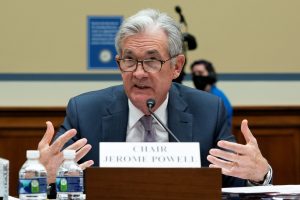Fed’s Inflation Policy Complicated by Invasion
Ayse Bayram
Staff Writer
With inflation steadily increasing due to the numerous issues dealt with in the last two years, investors and consumers show concern as prices continue to rise. Many Fed officials have discussed a strict, aggressive approach to battle these rising costs. But now the long-awaited interest rate hike from the Federal Reserve faces a challenge. The Russian invasion of Ukraine.
The Russian invasion of Ukraine threatens the global economy as consumers have already taken a hit with rising oil prices at their local gas stations. Fear of rising wheat and metal prices raise concerns in the markets as prices are hitting new highs.
Consumers and manufacturers have been feeling supply chain strains that have nearly doubled and tripled the prices of common products that have been heavily relied on by businesses. And these issues do not seem to be disappearing anytime soon.
Raising interest rates creates difficulties for businesses and consumers who wish to take out a loan.

So why would the Fed decide to increase rates at a time where businesses continue to face difficulties?
As wage rates have increased, so has consumer spending. These two factors have shown that current inflation rates have not discouraged individuals from purchasing goods despite high prices. This shows economists that the economy continues to perform.
Inflation has often been encouraged by increases in money supply and high demand for products that are low in supply.
The FOMC’s influence on monetary policy within the economy gives the ability to control money supply. Members are given tools to deter banks and individuals from borrowing as raising rates adds onto the cost of borrowing. It is the hope of the Fed that making borrowing more expensive as materials and products cost higher should curb rising money supply.
Slowing down inflation will most likely slow down economic growth, but it is with hope that in the long run prices will begin to slowly decrease to pre-COVID levels.
Now these tools should help constrain current economic conditions as the latest inflation rate surpasses 7%. But the Fed cannot magically solve geopolitical tensions that continue to spread abroad.
Supply chain issues felt domestically and internationally continue to thrive. Countries that have once been relied on for materials are busy playing catch up in production.
Despite the increases seen in job reports, businesses continue to search for employees, often hindering their abilities to perform effectively.
In the short term, the Fed’s decision should have an effect on inflation.
But there are too many other issues that the Fed cannot affect with their choices that can slow down rising prices. The volatility in the markets since the beginning of the year have only proven this to be true as many are uncertain of how long the conflict will last.
Fear of how much bigger the conflict could become and spread across other regions of the world adds onto inflationary periods as consumers have learned to become accustomed to stocking up on necessary goods.
Contact Ayse at ayse.bayram@students.shu.edu

